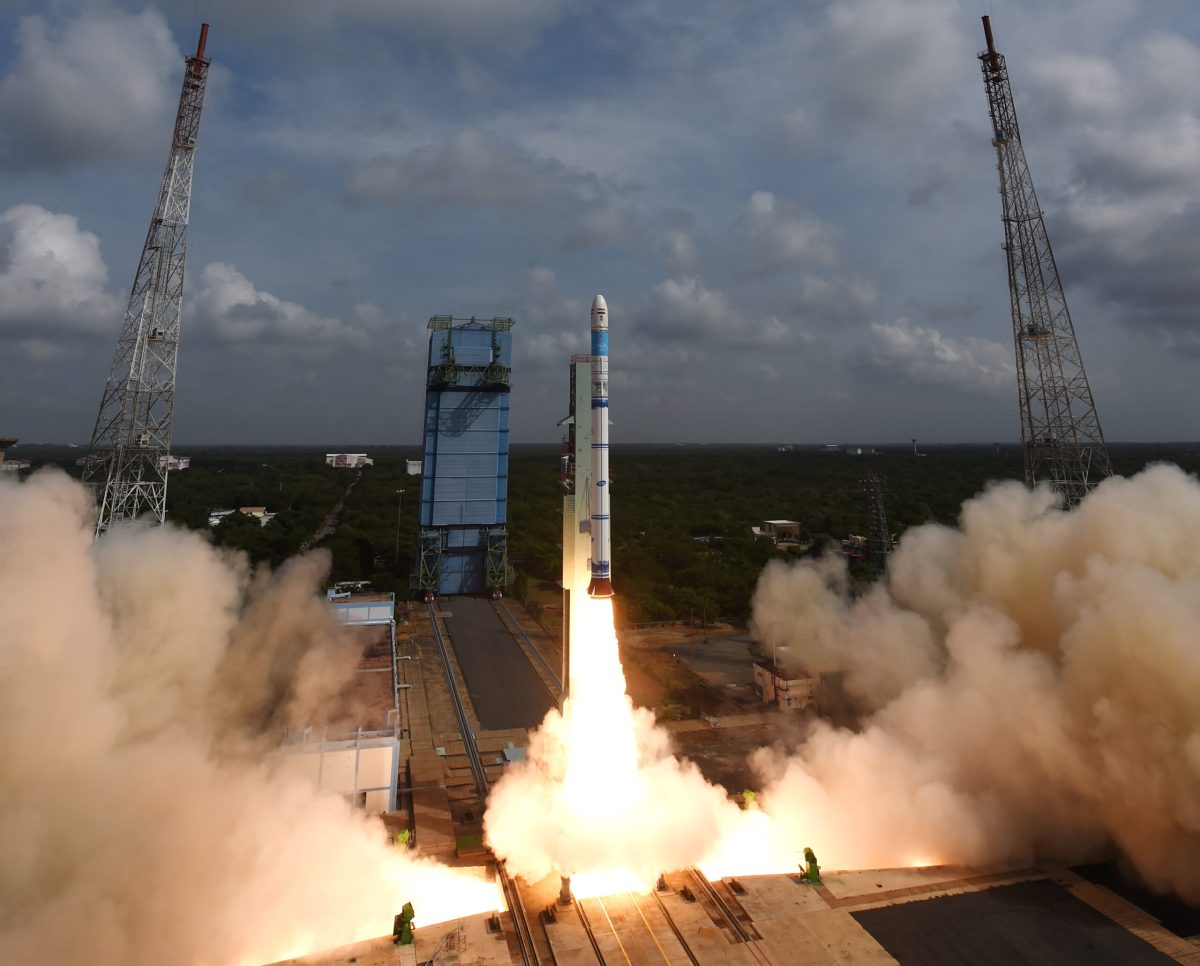HELSINKI — India successfully launched its third SSLV Thursday, placing an Earth observation satellite into orbit and completing the solid rocket’s development process.
The Small Satellite Launch Vehicle (SSLV) lifted off at 11:47 p.m. Eastern, Aug. 15 (0347 UTC Aug. 16) from Satish Dhawan Space Centre.
The rocket carried the experimental Earth observation EOS-08 spacecraft into its intended 475-kilometer circular orbit inclined by 37 degrees for the Indian Space Research Organisation (ISRO). EOS-08 separated from the upper stage 816 seconds into flight.
The 34-meter-long SSLV consists of three solid stages and a liquid propulsion Velocity Trimming Module (VTM) upper stage.
“The third development flight of SSLV, SSLV-D3 with the EOS-08 satellite, has been successfully accomplished,” ISRO chairman S. Somanath said in a live streamed post-launch address. “The rocket has placed the spacecraft into a very precise orbit as planned.”
“Congratulations to the SSLV-D3 team… With this third development flight of SSLV we can declare the development process of SSLV completed.”
According to Somanath, the successful completion of the SSLV’s development phase paves the way for technology transfer to Indian industry, enabling serial production and operational deployment of the SSLV.
The SSLV is designed for low cost, quick turn-around time, flexibility in accommodating multiple satellites and minimal launch infrastructure requirements, according to ISRO.
The first SSLV flight failed in August 2022 when an upper stage malfunction left its payloads stranded in a very low orbit. The second launch, in February 2023, was successful.
EOS-08 and future missions
The 175.5-kilogram EOS-08 satellite is based on ISRO’s Microsat/IMS-1 satellite Bus. It carries the Electro Optical Infrared Payload (EOIR) and the Global Navigation Satellite System-Reflectometry payload (GNSS-R) payloads for Earth and atmospheric monitoring.
EOIR infrared data will be used “for applications such as satellite-based surveillance, disaster monitoring, environmental monitoring, fire detection, volcanic activity observation and industrial and power plant disaster monitoring,” according to ISRO.
GNSS Reflectometry involves collecting signals reflected from the Earth’s surface. This is used to monitor ocean, land and ice surfaces, wind state, soil moisture, sea levels and more.
Also aboard is the SiC UV Dosimeter. This will “monitor the ultraviolet irradiance at the View Port of the Crew Module in Gaganyaan Mission and to use as a high dose alarm sensor for UV Radiation.” Gaganyaan is India’s human spaceflight program.
The 0.2-kilogram SR-0 DEMOSAT for startup Space Kidz India was released into the same orbit just over three minutes after EOS-08’s separation.
The launch was India’s third of 2024. It follows the early January launch of the XPoSat X-ray astronomy satellite and the INSAT-3DS meteorological satellite in February.
India announced plans earlier this year to launch up to 30 times over a 15-months period. These include suborbital and commercial launches.
A first Gaganyaan uncrewed demonstration flight is planned for the second half of the year. A PSLV rocket is expected to launch the Proba-3 formation-flying satellites for ESA in Q4. Other PSLV and GSLV launches are planned, though scheduling is unclear.
